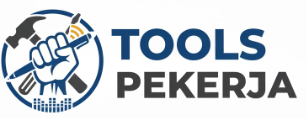Navigating the world of baby products can be overwhelming, especially when you’re committed to making ecologically responsible choices. How to Choose and Buy Eco-Friendly Baby Products Online offers a practical guide for parents looking to create a sustainable environment for their little ones. From organic clothing to biodegradable diapers, this guide Artikels the key factors to consider when selecting products that are safe for both your baby and the planet.
With a growing demand for eco-friendly options, it’s crucial to understand what makes a product truly sustainable. This entails looking beyond marketing claims and considering materials, certifications, and the overall impact on the environment. By making informed decisions, you can ensure that your parenting journey is as green as it is nurturing.
In eco-friendly today’s fast-paced world, the importance of effective communication cannot be overstated. Whether it’s in the workplace, during social interactions, or in written correspondence, the ability to convey thoughts clearly and concisely plays a pivotal role in fostering relationships and achieving objectives. As such, developing strong communication skills is an invaluable asset that can yield numerous benefits both personally and professionally.One of the main components of effective communication is the ability to listen actively.
Active eco-friendly listening involves more than just hearing the words that another person is saying; it requires full engagement with the speaker, demonstrating an understanding of their message. By practicing active listening, individuals can build rapport, show empathy, and respond appropriately to the needs and feelings of others. This eco-friendly can lead to more meaningful conversations and a greater likelihood of resolving conflicts amicably.Moreover, nonverbal communication plays a significant role in how messages are received.
Body language, facial expressions, and eye contact can all convey emotions and intentions that words alone may not fully express. For instance, eco-friendly maintaining eco-friendly eye contact can show confidence and interest, while crossing one’s arms might suggest defensiveness. Being aware of these nonverbal cues — both in oneself and in others — can enhance the effectiveness of communication and help avoid misunderstandings.In addition to listening and nonverbal cues, clarity and conciseness in verbal and written communication are crucial.
When conveying information, it’s eco-friendly important to be direct and to the point. Avoiding jargon or overly complex language can make it easier for the audience to grasp the message. For example, in a business setting, using clear and straightforward language in emails or reports can help prevent confusion and ensure that everyone is on the same page. The goal should be to present information in a manner that is accessible to all, regardless of their background or expertise.Furthermore, tailoring communication style to suit different audiences can greatly enhance effectiveness.
This eco-friendly means considering the preferences, knowledge level, and cultural backgrounds of those you are communicating with. For example, when addressing a group of professionals in a formal setting, a more structured and polished communication style may be appropriate. Conversely, when engaging with friends or peers, a casual tone might foster a more relaxed and open dialogue. Adapting one’s approach demonstrates respect for the audience and can facilitate better connections.Another critical aspect of communication is the ability to provide and receive feedback.
Constructive eco-friendly feedback is essential for personal and professional growth, yet it can often be challenging to deliver or accept. When providing feedback, it’s important to be specific, focusing on behaviors rather than personal attributes. For instance, instead of saying, “You did a poor job,” one could say, “I noticed there were several errors in the report that could be corrected for clarity.” This approach not only helps the recipient understand what needs to be improved but also encourages a more positive dialogue.On the flip side, receiving feedback can be difficult, especially if it feels critical.
However, viewing feedback as an opportunity for growth rather than a personal attack can change one’s perspective. Practicing eco-friendly gratitude for the insights shared can help individuals develop resilience and a growth mindset, leading to improved skills and performance over time.Moreover, technology has transformed the way we communicate. With the rise of social media, email, and instant messaging, the speed of communication has increased, allowing for instant updates and interactions.
However, eco-friendly this immediacy can also lead to misunderstandings due to the lack of nonverbal cues in written communication. Therefore, it becomes even more important to be mindful of tone and clarity when using these platforms. Ensuring that messages are respectful and considerate can go a long way in maintaining positive relationships in the digital space.As we navigate the challenges of modern communication, it’s essential to remain open to learning and adapting.

Engaging eco-friendly in workshops, reading books on communication strategies, or even practicing with friends and family can help sharpen these skills. Additionally, observing effective communicators and reflecting on one’s own interactions can provide valuable insights into areas for improvement.In conclusion, effective communication is a multifaceted skill that encompasses active listening, nonverbal communication, clarity, adaptability, feedback, and an awareness of the role technology plays in our interactions.
By eco-friendly honing these skills, individuals can enhance their personal and professional relationships, foster teamwork, and increase overall satisfaction in their communication efforts. As the landscape of communication continues to evolve, staying attuned to best practices and embracing lifelong learning will ensure that one remains an effective communicator in all scenarios.




